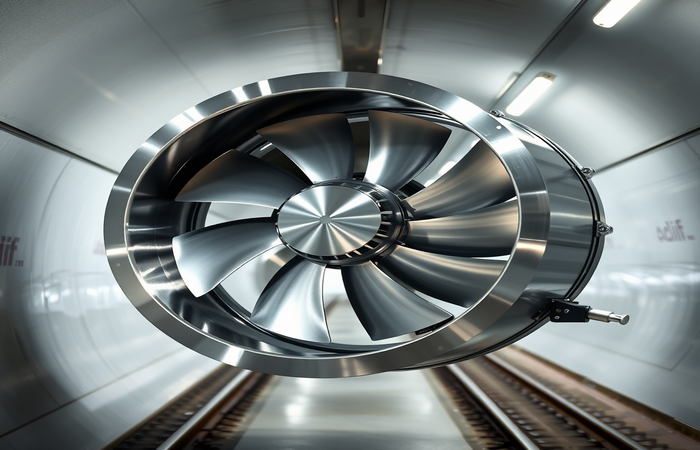GBRf’s £5.75M Rail Hub: Green Revolution, Jobs & Growth

This article explores the significant impact of GB Railfreight’s (GBRf) new £5.75 million maintenance hub on the UK rail freight industry. The hub, situated along the East Coast Main Line, represents a substantial investment in infrastructure modernization and sustainability. It promises to revolutionize cargo movement, enhance operational efficiency, and significantly reduce the environmental footprint of rail freight operations. We will delve into the technological advancements incorporated into the hub, its contribution to the broader goals of decarbonization within the UK supply chain, and its potential to stimulate economic growth and job creation in the region. Furthermore, we will analyze the strategic implications of this investment for GBRf and the future of the UK rail freight sector, considering its role in meeting increasing demand and environmental targets. The analysis will cover the hub’s role in maintenance optimization, its contribution to sustainable practices, and its broader economic and societal benefits.
A State-of-the-Art Maintenance Facility
GBRf’s new maintenance hub is not merely a refurbishment of existing facilities; it represents a substantial leap forward in rail freight maintenance technology. The £5.75 million investment signifies a commitment to operational excellence and a proactive approach to addressing the challenges and opportunities within the industry. The facility’s design incorporates several key features: it is fully electrified, supporting electric shunt engines and forklifts, thus minimizing carbon emissions. The hub is strategically positioned along the busy East Coast Main Line (ECML), a 300km+ route, ensuring accessibility and efficiency. Its capacity to analyze four wagons per shift represents a significant increase in maintenance throughput, directly impacting operational reliability and reducing downtime.
Decarbonization and Sustainability Initiatives
The hub’s commitment to sustainability aligns perfectly with GBRf’s broader net-zero target by 2050. The electrification of the facility, along with the utilization of electric equipment, contributes significantly to reduced carbon emissions. This initiative demonstrates a clear commitment to environmental responsibility, reflecting a growing trend in the rail industry towards environmentally friendly operations. The fact that freight trains emit 74% less CO₂ per tonne of goods delivered compared to road transport further strengthens the case for rail as a sustainable transportation solution. This is a key factor in attracting customers seeking to decarbonize their supply chains, a critical factor in GBRf’s business strategy. The hub acts as a testament to GBRf’s commitment to sustainable practices and responsible environmental stewardship.
Economic Growth and Job Creation
The opening of the new hub is not only beneficial for GBRf and the environment but also for the local economy. The investment in infrastructure has created new jobs in Peterborough, boosting the city’s economic vitality. This exemplifies the multiplier effect of rail infrastructure projects, as they generate employment not only directly within the rail industry but also indirectly through supporting industries and services. The increase in efficiency and reliability facilitated by the hub will benefit GBRf’s customers, supporting business growth and potentially attracting further investment in the region. The enhanced operational capacity will allow GBRf to handle a greater volume of freight, leading to more extensive rail network utilization and increased economic activity.
Technological Innovation and Future-Proofing
Beyond its immediate operational benefits, the hub serves as a testbed for emerging technologies. As new smart technologies emerge, GBRf plans to utilize the hub to evaluate and implement innovative solutions, thus future-proofing the facility and ensuring its continued relevance within the rapidly evolving rail industry. This proactive approach towards technological adoption positions GBRf as a leader in innovation and highlights the company’s commitment to staying at the forefront of advancements in rail maintenance and operations. The hub’s potential for technological innovation makes it more than a mere maintenance facility; it is a hub for research, development, and the improvement of rail freight operations.
Conclusions
The inauguration of GB Railfreight’s state-of-the-art £5.75 million maintenance hub represents a significant milestone for the UK rail freight industry. This investment underscores a commitment to modernization, sustainability, and economic growth. The hub’s fully electrified design, its strategic location on the East Coast Main Line, and its enhanced maintenance capacity are key features that contribute to improved operational efficiency and a significantly reduced environmental impact. The facility’s capacity to process four wagons per shift drastically increases maintenance throughput, enhancing reliability and minimizing service disruptions. The hub’s focus on electrification and reduced emissions aligns with GBRf’s ambitious net-zero targets by 2050, showcasing a proactive approach to environmental responsibility and decarbonization within the supply chain. The creation of jobs in Peterborough highlights the positive economic impact of such investments, stimulating local growth and fostering regional development. Moreover, its designation as a testbed for emerging smart technologies underscores GBRf’s commitment to innovation and future-proofing the rail freight sector. In conclusion, GBRf’s new maintenance hub serves as a model for sustainable and efficient rail freight operations, setting a new benchmark for the industry and contributing significantly to the UK’s economic and environmental goals. Its success will likely inspire further investment in rail infrastructure and drive the transition towards a cleaner, more efficient, and sustainable transportation system.




